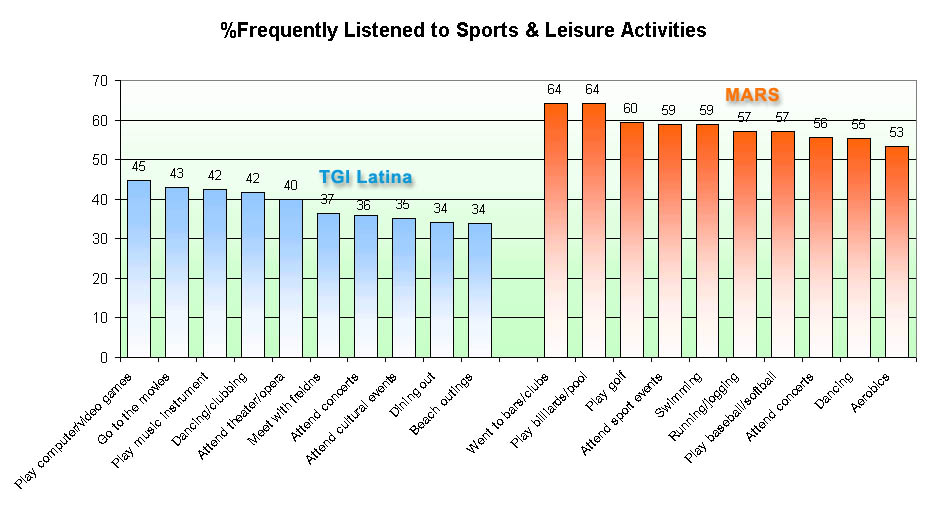
Rock 'n Roll Forever in the Americas
What is rock 'n roll? Put a hundred musicians in one room, and we will get a hundred different definitions. The dictionary describes rock 'n roll as "a form of popular music that evolved in the 1950's from rhythm and blues, characterized by the use of electric guitars, a strong rhythm with an accent on the offbeat, and youth-oriented lyrics." But the contemporary significance of rock 'n roll is less about musical form. In the very blunt words of Ed Sanders, "The relationship between rock and revolution is granting that most musicians are a bunch of avaricious ass-sucking dogs, and most of the song writers (too), myself in many ways included. It's the form or the intention, or the implications of the music that make it interesting to the revolutionary. It's a tool and a tactic for getting children to revolt against the protoplasm that raised them and consider other forms of government, other forms of dealing with the situation. When you coordinate and liberate and release the sexuality and the minds of youth, and can twist it and change it toward a different goal and direction, via rock 'n roll, via fucking in the streets, via dope, via action, direct action ... then you can maybe push this country and we can rewrite the whole structure, based on the kind of energy released by rock 'n roll." In other words, rock 'n roll is a lifestyle. And it is a self-consciously controversial lifestyle embraced by some and condemned by others (quoting Frank Sinatra, "Rock is sung, played, and written for the most part by cretinous goons. By means of its almost imbecilic reiteration it manages to be the martial music of every sideburned delinquent on the face of the earth.").
We will now cites some surveys conducted in the Americas. These surveys were conducted in different countries. Due to socio-cultural differences in the reception of rock 'n roll music, the survey questions were not identical. In Latin America, it was necessary to make a distinction between imported English-language rock 'n roll music and the homegrown rock en espaņol. In the USA, it was necessary to distinguish between sub-genres such as classic rock hits, soft rock, progressive rock, etc.
In Latin America, the survey is the TGI Latina survey of 52,639 persons between the ages of 12 to 64 years old in nine different countries (Argentina, Brazil, Chile, Colombia, Ecuador, Mexico, Panama, Peru and Venezuela) conducted during 2001 and 2002. Within this survey, 27.7% of the respondents indicated that they frequently listen to rock 'n roll music which includes English-, Spanish- and Portuguese-language rock. In the USA, the survey is the MARS survey of 22,097 adults conducted during the first quarter of 2002. Within that survey, 43.9% of the respondents said that they frequently listen to rock 'n roll music which includes album oriented rock, progressive rock, classic rock, top 40 hits, soft rock, etc.
Our interest is less in the overall reception level of rock 'n roll music than in the differences in profiles. In the following two charts, we show the age/sex distributions. As the quote in the opening paragraph suggests, rock 'n roll is a generation-defining lifestyle choice. But this sharp generational difference cannot be sustained demographically over time. Rock 'n roll music came into being in the early 1950's in the USA, and the early fans are today into their 50's. The Who may have sung "I hope I die before I get old" in their song My Generation, but they and their fans have inevitably gotten old just as the scandalous music of Stravinsky is today grouped under the genre of classical music. In another twenty years or so, the US distribution of rock 'n roll listeners will no longer show that sharp drop at the top end.

In the next chart, we show the incidences by economic affluence. In Latin America, this is measured in terms of socio-economic level determined from ownership and access to products and services as well as social standing. In the USA, this is measured solely in terms of household income. Here, the patterns are distinctly different. In Latin America, rock 'n roll music is identifiably an import even in the localized rock en espaņol, and it competes for cultural space with indigenous forms such as musica popular brasileira, salsa/merengue, vallenato, cumbia, tango, etc. Consequently, the socio-economic profile is skewed upwards in Latin America.

If the point about rock 'n roll is a particular lifestyle, then its distinguishing mark is less about economic affluence. Rather, as the next chart, rock 'n roll is about an active lifestyle. Bearing in the mind that the incidence is 27.7% in TGI Latina and 43.9% in MARS for the survey universe, active people are more likely to listen to rock 'n roll.

Will rock 'n roll live forever, as the title of this article seems to suggest? To quote Nick Gillespie, "Rock -- a loose term that designates at best an inchoate impulse or sensibility in certain popular music--provides not only a youthful outlet against adults, but a forum where musical genres and traditions mingle promiscuously and often ridiculously; it creates a psychic location in which race, class, and gender lines can be dangerously blurred and overridden with wanton, hedonistic, and adolescent delight for kids of all ages." There is no one single rock 'n roll as this is an metomorphosing concept. If at first rock 'n roll was practiced by black rhythm 'n blues musicians, it was quickly co-opted and watered down by white mainstream musicians. Then along came the British invasion and the genre was reinvigorated immensely. And so life goes on.
(posted by Roland Soong, 10/12/2002)
(Return to Zona Latina's Home Page)